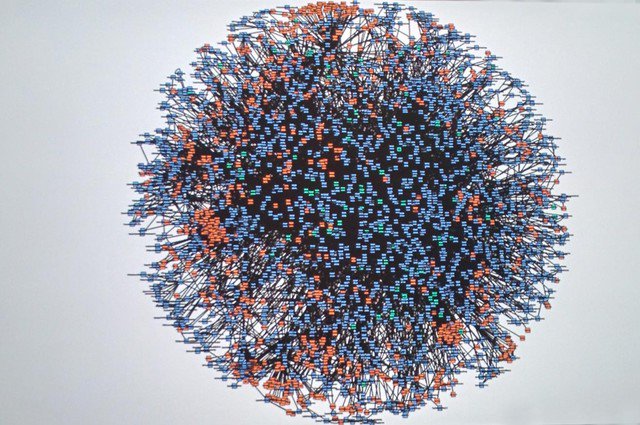If you pick up a list of talks for any developer conference, you will find at least one talk related to Microservices. As many, I have been fascinated by them for some time now. The obvious question to me was what are microservices. I started reading up on it. I came across Martin Fowler's post. I listened to industry experts such as Clemens Vasters. In a series of books to read on the topic, I started out with the Building Microservices book. Before we proceed further, it is necessary to understand what a service is.
What's a service?
The SOA patterns book says
Service should provide a distinct business function and it should be a coarse-grained piece of logic. One of the characteristics of the service is autonomy, which means the service should be mainly self-sufficient.
I like this definition. The main point to notice here is autonomy. This means a service can be deployed anytime, multiple times a day without any burden of affecting the consumers. It also tries to keep the failures isolated to itself. Loose coupling between these services is another hallmark of service oriented architecture. So, what are microservices then? What's new about them? Are they just SOA done right?
Microservices definition or properties?
There is no industry-wide, fully agreed, one sentence type of definition for microservices. However, there is a set of properties laid out in Building microservices below:
- They are autonomous.
- Their boundaries align with business boundaries.
- They are small.
Now, how small is small enough? Until it doesn't feel too big? To me, they should be small enough to maintain the cohesion. Business boundaries also give us a good idea on their size. If your service spans across multiple business areas, it is too big. If they are too small and have too many boundaries, then you may end up in the death star architecture like this:

To further the point on autonomy, I should be able to independently scale these services. They should also have their own data sources and don't share a monolithic one. I can then call this data independence. One good point I've heard is
You shouldn't make a query/get call to another microservice.
You can hear Scott Bellware and Scott Hanselman discussing the details here
So, microservices are a combination of these properties. Here are few other great talks that made things very clear to me:
- Avoiding Microservices Megadisasters
- Compositional UI- the Microservices Last Mile
- Principles of Microservices
Analogy
I tend to shy away from playing the analogy card too much but if/when I get pushed too hard on one on this topic, I am likely to use this.

That drawing is trying to refer to a gas stove. Let's say we have to make chicken curry, steam some veggies and make Indian roti(flat bread) for dinner. I can cook all of these things together on each burner without really affecting one another. If I mess one up, the other one is not affected. I can take them off the burner at any time. That's autonomy. Each of these gets a steady supply of gas and has some their own ingredients. That's data independence. Those ingredients stay in the pot and don't leave it until I put them on my plate (composite UI). I have my boundaries clearly defined. I can use an extra burner if required for something that I need more of. Now, I am realizing the scalability aspect of the system.
In the real world
Let's apply this to my favorite tennis equipment site.

All the red rectangle areas could be services of their own with their own databases. They can be scaled differently with different deployment policies.
One of the highly scaled backend services apps I worked on had 12 different NServicebus endpoints. They were scaled differently at least from the instances perspective. They were deployed separately. They were sort of fault tolerant. They processed tens of millions of records every day.
A couple of components in the chain of endpoints were doing direct calls to SOAP services with monolithic databases. The stored procedures used were in the zone of 5k-7k lines. No one knew how to optimize them or what rules were in them. The components took longer to process than everything else. If they failed the couldn't process their backlog at all. Was this a microservices system? Not really because they were sharing a monolithic database through RPC call. Breaking that up was not a trivial task. Moreover, the endpoints did not represent business boundaries very well.
Avoid the tech evangelism trap
A good chunk of folks in our industry is trying to promote something. More often than not, it is their product FOO and it is better than everyone else's. It is the exact thing you are going to need for the foreseeable future. How many times do we hear this type of stuff? The container products are pushed very hard these days in the Microservices space. The evangelists/promoters will tell you what's right about those but don't go into space of where it doesn't apply. They tell you enough to push you off the cliff but leaving the flying part to you. Very often people just get hung up on these things. When you ask them which problem these are actually solving, you get crickets back. I am not saying all of these are bad ideas but you don't have to have one to have microservices. For the exhaustive list of what does or what doesn't make a microservice, I'd refer to Jimmy Bogard's post
Where do I begin?
It is usually easier to break up a monolith into microservices than starting out in a green field project. So, how do you divide these monoliths? There is no one silver bullet type of answer. You have to take it on a case by case basis. The good place to start is monitoring your monolith and develop a heat map. Kelsey Hightower says "If you tell me that the app is slow, you got to be able to tell me why." on this episode of hanselminutes. They touch on a number of topics in this area along with horizontal scalability. This is where containers come into the picture.
Another place is to dig deeper into the business domain and start developing some consensus around boundaries there. I’ve seen implementations go completely awry if this was missed.
Parting words
I hope this clarified some of the clouds around the definition of microservices. They are not a solution that you can slap on every problem out there. I wouldn't break up my blog into microservices architecture. We will cover more topics in the area later.



Comments